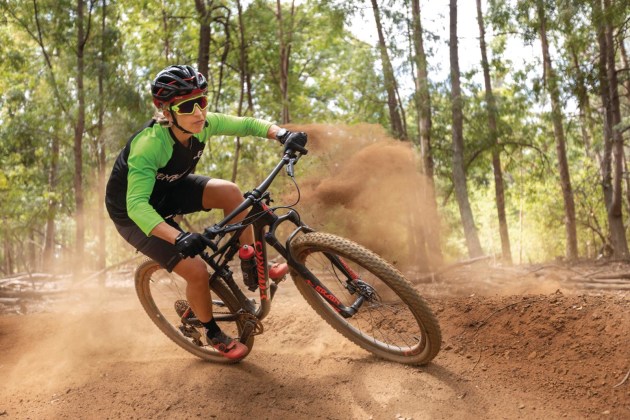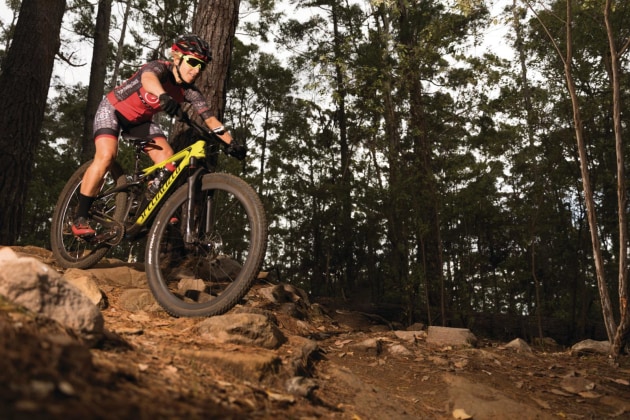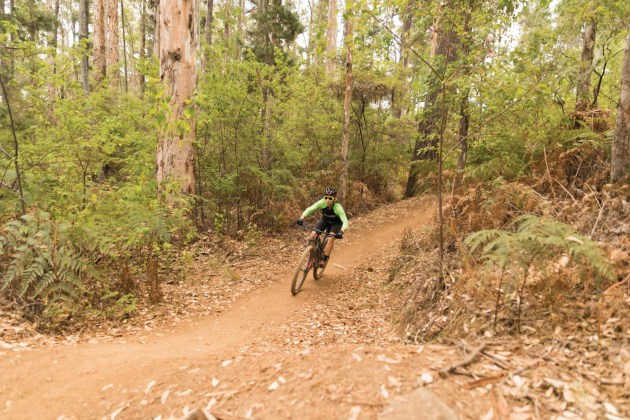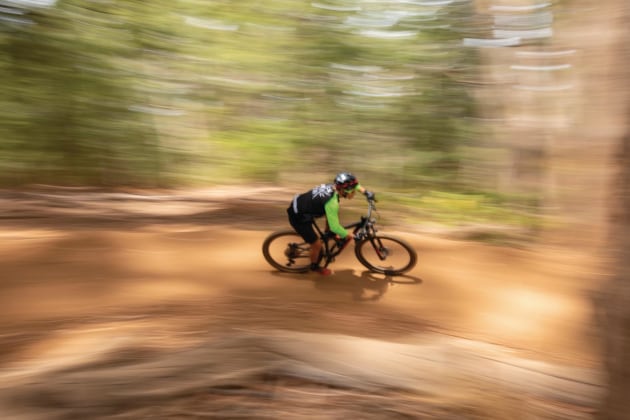Female MTB Training: Should you train differently from men - PART I
Pictures: Mark Hunter and Simon McComb
Most exercise physiology research has been mainly done on men, or if women are included, no distinctions tend to be made between the results for males and females.
Sometimes women’s fluctuations in hormones are deemed ‘too hard to study’ to let women be included in studies. So if they are, it tends to be women on an oral contraceptive (which reduces the natural hormone fluctuation) or women in the low hormone phase of their menstrual cycle (during this phase women are more like small men). The results from these studies have then been applied to both men and women, without any thought being given to the appropriateness of these recommendations for female athletes.
We all know that there are hormone differences between men and women. These hormone differences manifest themselves in a host of different physiological ways.
To understand how these affect the body you need to know that during a regular menstrual cycle, estrogen and progesterone levels change. During the first half of the cycle both estrogen and progesterone are low (and this is when women are more ‘like men’), just before ovulation estrogen peaks. Then, during the second half of the cycle, estrogen dips down before rising again as progesterone also rises.
Listed below are a few of the effects of these two hormones. Understanding the effects these hormones have on your body should help you get some more insight as to why women should not train like men.
Estrogen
- Increase in fluid retention.
- Decrease in the liver’s production of glucose especially during exercise, which means you burn more fat as a fuel source during exercise and higher intensity efforts are harder to hit.
- Decrease in blood plasma volume, which means thicker blood and higher risk of DVT.
- Stimulates insulin growth factor 1 (IGF-1) which helps bone formation.
- It is anabolic, so it helps to build muscle.
- Decreases amino acid pool in brain, which can result in ‘loss of mojo’ feeling.
Progesterone
- Increase in core temperature by about 0.5 degrees, and delayed sweating which means a shorter time to fatigue.
- Increase in respiration rate which means exercising at altitude will feel harder, and triggers for exercise induced asthma are lower.
- Increased loss of sodium in your sweat.
- Decreased sensitivity to insulin, which then prevents the body from storing glycogen.
- Spatial cognition and hand-eye coordination is trickier.
So how can women get the most out of these hormone fluctuations?
Now that we know that most of the research has been done on men and the results generalised to women, and we can see the influence that the female hormones have on our athletic performance, let’s dive a bit deeper to see how women can work with these hormone fluctuations to get the most out of training and riding.
The start of the follicular phase is when estrogen and progesterone hormones are at their lowest, but with a rise in estrogen towards the end of this phase, just before ovulation.
During this time your training and racing can be tweaked as follows:
- Carb loading before a big ride or race will work.
- It is easier for the body to use fat as a fuel source, so your carb requirements on the bike are a little less than you may think. Note that you still need to fuel correctly, but you can get away with eating a bit less whilst exercising.
- It is easier to hit higher intensities.
- It is easier to build muscle.
During the follicular phase is the best time to schedule hard interval sessions, challenging PB sessions and heavy lifting in the gym. The time that coincides with the spike in estrogen is the time to really go hard as you will be at your strongest then.
The luteal phase is when estrogen and progesterone hormones are rising. During this time your training and racing can be tweaked as follows:
- Carb loading before a big ride or race won’t work. So, no need for a double helping of pasta the night before. However, you will need to fuel with a bit more than usual during any intense rides.
- Your ability to ride well in the heat is impaired due to the double whammy of sweating more sodium, which can lead to a risk of being hyponatremic (fatigue, headaches etc.) during exercise and having an already elevated core temperature.
- It is harder to build lean muscle, which means that it is also harder to recover.
During the luteal phase is the best time to schedule easier workouts, recovery blocks, and skills sessions.
Generally, exercise will feel harder during the high hormone phase, but do not despair. There are some changes you can make to your training and nutrition to help:
- If you are riding or racing in the heat, then pre-load your electrolytes by drinking something with electrolytes in it the night before.
- You will need to eat a few more carbs whilst out on the bike.
- Make sure you refuel after exercise with 40 grams of protein within one to two hours, with the most important target of getting 20g of those 40g ingested within a 30-minute window. Carbohydrate refuelling is also advised, but it's not as important as getting the protein in. Apply a ratio of three to one grams of carbs to protein during this one to two hour refuelling window, so you can replenish your glycogen reserves that you have just used up during training. This refuelling strategy should be applied for all women after all long (>three hours) or intense sessions irrespective of what phase of your cycle you are in, but in the high hormone phase it becomes even more important due to the catabolic nature of progesterone. For shorter, less intense rides it’s ok to use your next meal as your refuelling.








